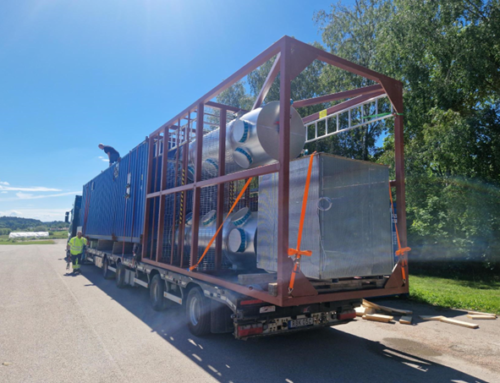The Anaerobic Digestion (AD) unit on which the French electromethanogenesis pilot will be installed has undergone a significant upgrade, pushing its performance to new heights. The production of biomethane has nearly doubled, going from 1,815,000 m3 (about 18 GWh/year) to 30 GWh/year, catering to the needs of 5,000 people previously and now to 2,520 households. The injection capacity into the gas network has been increased from 230 to 350 Nm3/h, and the substrate feeding has been enhanced to 38,000 tons per year. These advancements were obtained without modifying the total surface area and digestion volume, which remained unchanged at 2.5 hectares and 6,000 m3 respectively. The agricultural valorization through 31 farms remains intact, while now avoiding 7,100 tons of CO2 per year, equivalent to the annual emissions of over 3,500 new cars. These modifications will be taken into account for the HAZID safety study of the pilot (HAZard IDentification of the pilot in its environment) that will take place in October with Bureau Veritas (ENGIE lab CRIGEN subcontractor). This upgrade towards a high-capacity AD unit shows the strong willingness of the French actors such as ENGIE to increase the biomethane share in the networks.
In parallel, the labscale work on the tests of the 2 architectures of the electromethanogenesis reactors allowed to guide the choice of substrate which will therefore be the liquid digestate produced by the unit (resulting from the separation phase at the outlet of the post-digester). It will be used for the pre-pilot (≈ 10L) and pilot (1m3) scale tests.
September was also an important month for the electromethanogenesis consortium who met at the EU ISMET conference on bioelectrochemistry in Wageningen where 2 posters on the advances of the Biomethaverse project were presented for both digestate pretreatment (LEITAT) and Reactor CFD modelling (FAU). Marian Garcia Montillo, from LEITAT, won the 2nd prize for best poster presentation. Congratulations!





